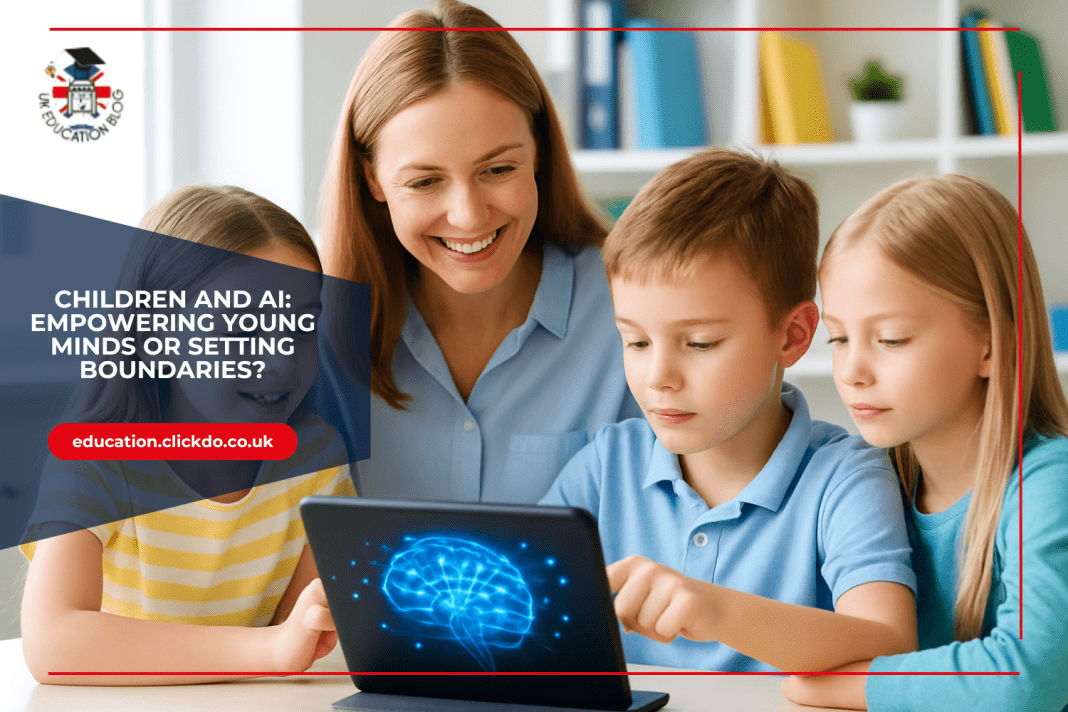Artificial Intelligence (AI) is as inevitable as life and is now directly impacting your children, particularly in an educational setting. Integrating AI into learning means that now is the time to prepare your children to navigate using AI safely.
The Benefits of Using AI To Teach

Since the release of OpenAI’s ChatGPT in 2022, AI is fast becoming a part of your child’s schooling. Given AI’s fact-finding and research capabilities, it’s no wonder children are turning to AI to help with schoolwork.
A growing number of educators support the use of AI in teaching, believing it helps prepare students to use these tools responsibly in the future. To protect children online and empower them with essential digital skills, both parents and teachers can utilize various safety tools—including the benefits of using a VPN for secure learning environments.
Personalised learning
One of the best advantages of using AI in an educational setting is the flexibility. AI programs have the potential to transform the education sector by creating personalised learning experiences tailored to each child’s unique needs. While AI is not a replacement for teachers, it can support improved comprehension by allowing children to engage with content interactively in a guided and controlled environment.
Makes learning exciting

The creative possibilities of AI are endless. Children can use it as a visual outlet using images, graphs, charts, and other school work-related visuals. The interactive aspect of AI makes learning fun and can foster a positive attitude toward schoolwork.
Improved accessibility
AI-powered text-to-speech tools, such as voice generators, can greatly support children with learning disabilities or those who face language barriers. These AI tools enable students to access a wide range of educational resources, helping to foster a more inclusive and accessible learning environment for all.
AI-powered text-to-speech tools, such as voice generators, can greatly benefit children with learning disabilities or those facing language barriers. These tools enhance accessibility by enabling students to engage with content more easily and independently. By providing access to a wide range of educational resources, AI helps foster a more inclusive and supportive learning environment for all students.
The Potential Risks of Kids Using AI

AI does open the door to exciting learning possibilities. But it comes with concerns regarding online safety and the mental impact on young minds and emotional well-being.
One of the biggest concerns about how AI affects children is data privacy. Some studies have found that young children may see AI bots as real people and share personal information. Sharing sensitive information puts families at risk for cybercrimes like data breaches or identity theft.
AI is always learning. The more your children interact with the software, the more AI learns about them. This way, they might fall at risk for targeted ad campaigns and messages that may be inappropriate or harmful.
AI does have a darker side that involves destructive emotional dependency. An AI consultant, Ola Handford, warns parents to ensure their children do not view AI as humans. Hanford feels deepfakes and AI companions are a big concern because “they can influence my kids and be damaging.”
Safeguarding Children From The Risks of AI

Looking at the potential data privacy and cybersecurity concerns, restricting may feel easier. But AI is here to stay. Therefore, teaching children to use AI responsibly will protect and prepare them for all stages of life.
The best way to help children navigate the exciting world of AI while staying safe is to explore the basics together. Parents can help children understand how AI mimics human intelligence while emphasizing safety. Some practical safety tips parents can teach children include using strong, unique passwords and not sharing personal information with AI.
Combining best practices like strong passwords with reliable cybersecurity tools like VPN results in a well-guarded defense against privacy concerns. A VPN helps to protect your children’s online safety by masking their real IP address and location. Using a VPN makes your child’s online activity more private.
A VPN prevents AI from tracking browsing habits and bombarding your child with targeted ads. While you have pressed your child on the importance of not sharing personal information, having a VPN gives you peace of mind. Your sensitive information in transaction, like passwords, is encrypted, even if your child uses a public Wi-Fi network. Because a VPN encrypts the online data in transit, it makes your connection more private and safer from online threats.
What’s The Verdict?
The world of AI is exciting, and let’s face it, this is only the beginning. There is no doubt that it has plenty of possibilities for young learners. From encouraging critical thinking, expressing creativity, and making education resources more accessible, the possibilities are endless.
But these benefits of AI learning also come with some potential privacy concerns that your children need to prepare for. It’s best to start teaching your children how to practice safety in the digital world with a hands-on approach.
Author Profile

- Passionate content creator, contributor, freelance writer and content marketing allrounder.
Latest entries
 ed techJune 4, 2025Children and AI: Empowering Young Minds or Setting Boundaries?
ed techJune 4, 2025Children and AI: Empowering Young Minds or Setting Boundaries? careerApril 21, 2025The Importance of an Effective Apostille Translation for Official International Certificates
careerApril 21, 2025The Importance of an Effective Apostille Translation for Official International Certificates careerMarch 13, 2025How can Students enter the very lucrative and growing iGaming Industry?
careerMarch 13, 2025How can Students enter the very lucrative and growing iGaming Industry? learningJanuary 23, 2025Top 5 Practical Articulation Skills for Creating Better eLearning Experiences
learningJanuary 23, 2025Top 5 Practical Articulation Skills for Creating Better eLearning Experiences







